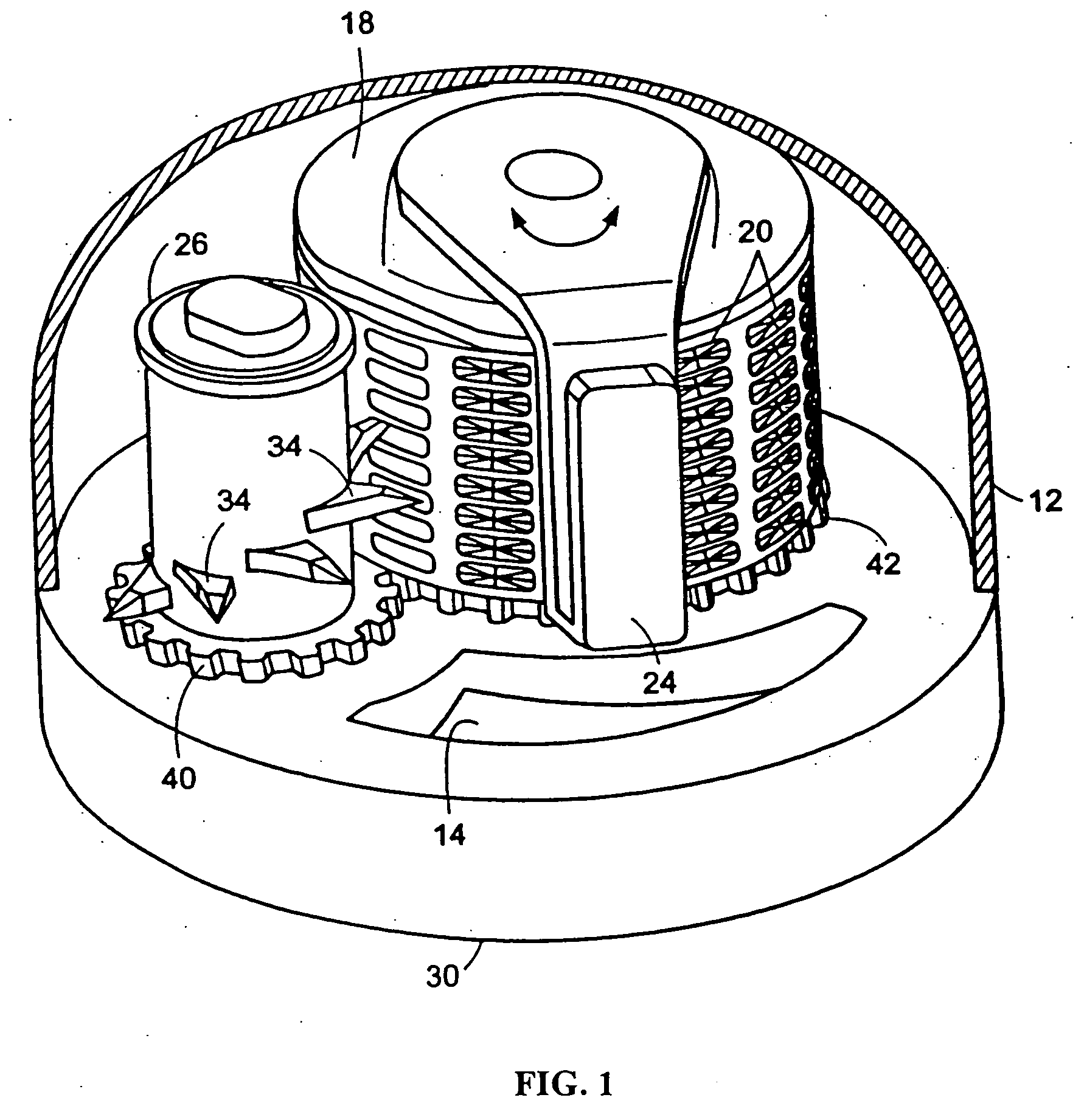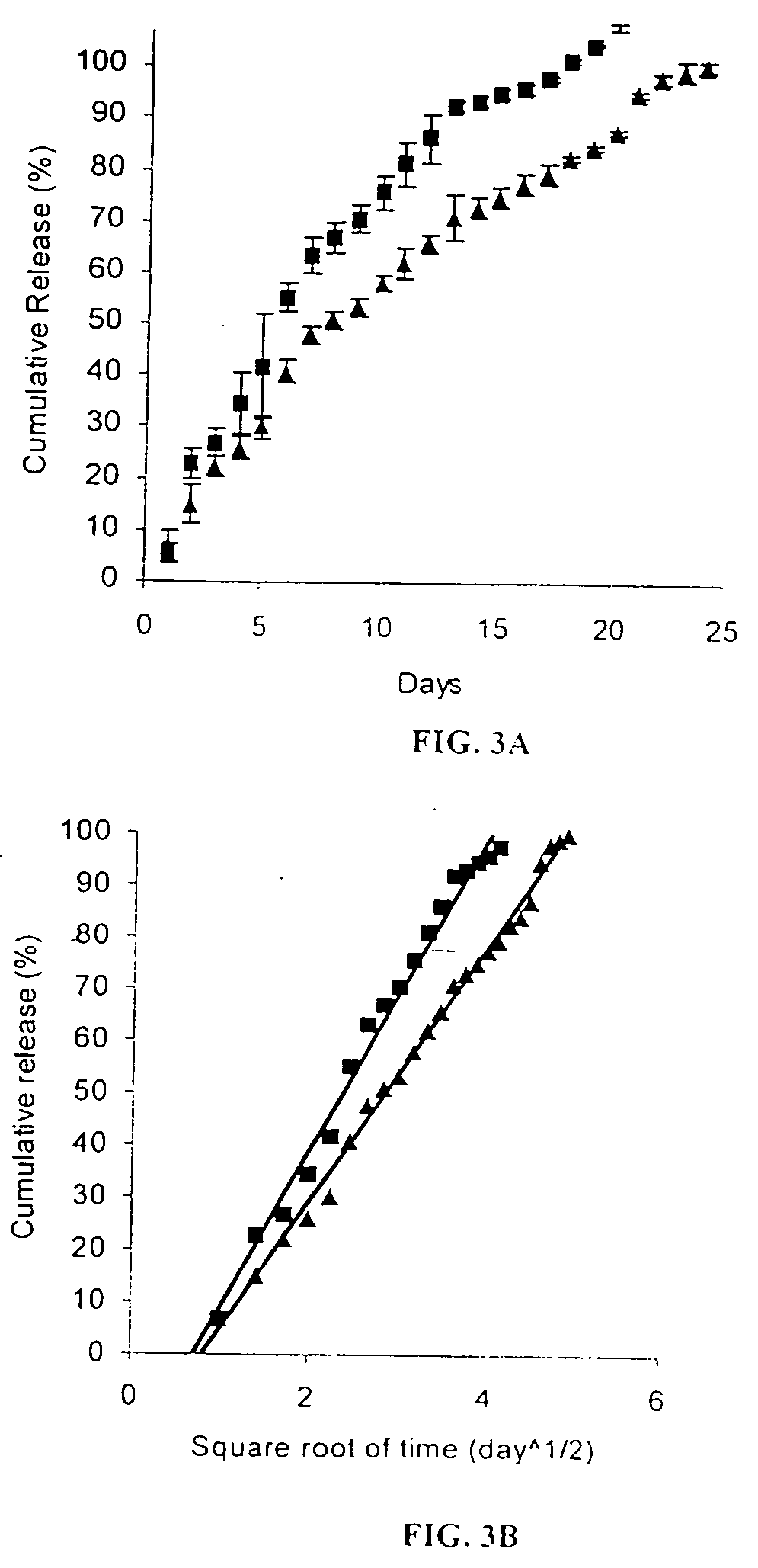Drug delivery systems and use thereof
a technology of vascular endothelial growth factor and delivery system, which is applied in the direction of eye treatment, prosthesis, antibody medical ingredients, etc., can solve the problems of difficult stabilization of drugs within slow release formulations, significant affecting the efficacy of drugs, and controlling the concentration profile, so as to reduce or inhibit the activity of natives, and treat or inhibit diseases
- Summary
- Abstract
- Description
- Claims
- Application Information
AI Technical Summary
Benefits of technology
Problems solved by technology
Method used
Image
Examples
example 1
Controlled Delivery of an Anti-VEGF Aptamer with Poly(lactic-co-glycolic) Acid Microspheres
[0064] The following example demonstrates the effectiveness of a drug delivery modality that releases an anti-VEGF aptamer, EYE001, in a sustained and controlled manner over a significant period when applied locally to the outer part of the sclera. The retina and choroid are the target tissues, because this aptamer, as discussed above, blocks the contribution of VEGF to choroidal neovascularization and diabetic macular edema. Use of transscleral administration, no more frequently than every 6 weeks, is an attractive substitute to intravitreal injections of the naked, unencapsulated aptamer.
[0065] As is discussed below, PLGA microspheres containing anti-VEGF RNA aptamer (EYE001) formulations in the solid-state were developed by an oil-in-oil solvent evaporation process. In vitro experiments were performed to characterize the release profiles of this formulation. Stability and bioactivity of t...
example 2
Anti-VEGF Aptamer Reduces Blood Vessel Leakage In Vivo
[0094] This example shows that the EYE001 aptamer, when released from a microsphere, can traverse the sclera and then impart a biological effect within the eye.
[0095] EYE001 aptamer was encapsulated within poly(lactic-co-glycolic) acid (PLGA) microspheres using an oil-in-oil solvent evaporation process. Briefly, 25-30 mg of lyophilized EYE001 was suspended by homogenization in a 2 mL solution of PLGA (200 mg) dissolved in methylene chloride. Two mL of the coacervating agent poly(dimethylsiloxane) was added to the suspension at a rate of 2 mL / min and homogenized for 1 minute at 2,000 rpm. The resulting oil-in-oil suspension was added to 50 mL of heptane under constant agitation and stirred for 3 hours to allow microsphere hardening and methylene chloride evaporation. Microspheres were collected by filtration and lyophilized for 24-48 hours for further methylene chloride evaporation. Prepared microspheres were subsequently stored...
example 3
Implantable Mechanical Drug Delivery Device
[0101] In addition to the passive drug delivery devices described in Examples 1 and 2, the aptamer containing microspheres may be delivered to the ocular surface using a mechanical drug delivery device.
[0102] A mechanical device for delivering the anti-Vascular Endothelial Growth Factor aptamer (EYE001, formerly known as NX1838) (see, Drolet et al. (2000) PHARM. RES. 17:1503-1510; Ruckman et al. (1998) J. BIOL. CHEM. 273:20556-20567) can be fabricated in a device as shown in FIG. 1. The cavities, each having an internal volume of about 0.25 μL disposed about the surface of a titanium drum, are filled with the aptamer containing microspheres. The cavities then are sealed by coating the drum with parylene. A titanium overcoat then is applied onto the parylene layer by sputter deposition. The drum then is placed within a titanium casing having (i) a surface complementary in shape to the outer surface of an eye, (ii) an aperture in the surfac...
PUM
| Property | Measurement | Unit |
|---|---|---|
| diameter | aaaaa | aaaaa |
| diameter | aaaaa | aaaaa |
| diameter | aaaaa | aaaaa |
Abstract
Description
Claims
Application Information
 Login to View More
Login to View More - R&D
- Intellectual Property
- Life Sciences
- Materials
- Tech Scout
- Unparalleled Data Quality
- Higher Quality Content
- 60% Fewer Hallucinations
Browse by: Latest US Patents, China's latest patents, Technical Efficacy Thesaurus, Application Domain, Technology Topic, Popular Technical Reports.
© 2025 PatSnap. All rights reserved.Legal|Privacy policy|Modern Slavery Act Transparency Statement|Sitemap|About US| Contact US: help@patsnap.com



